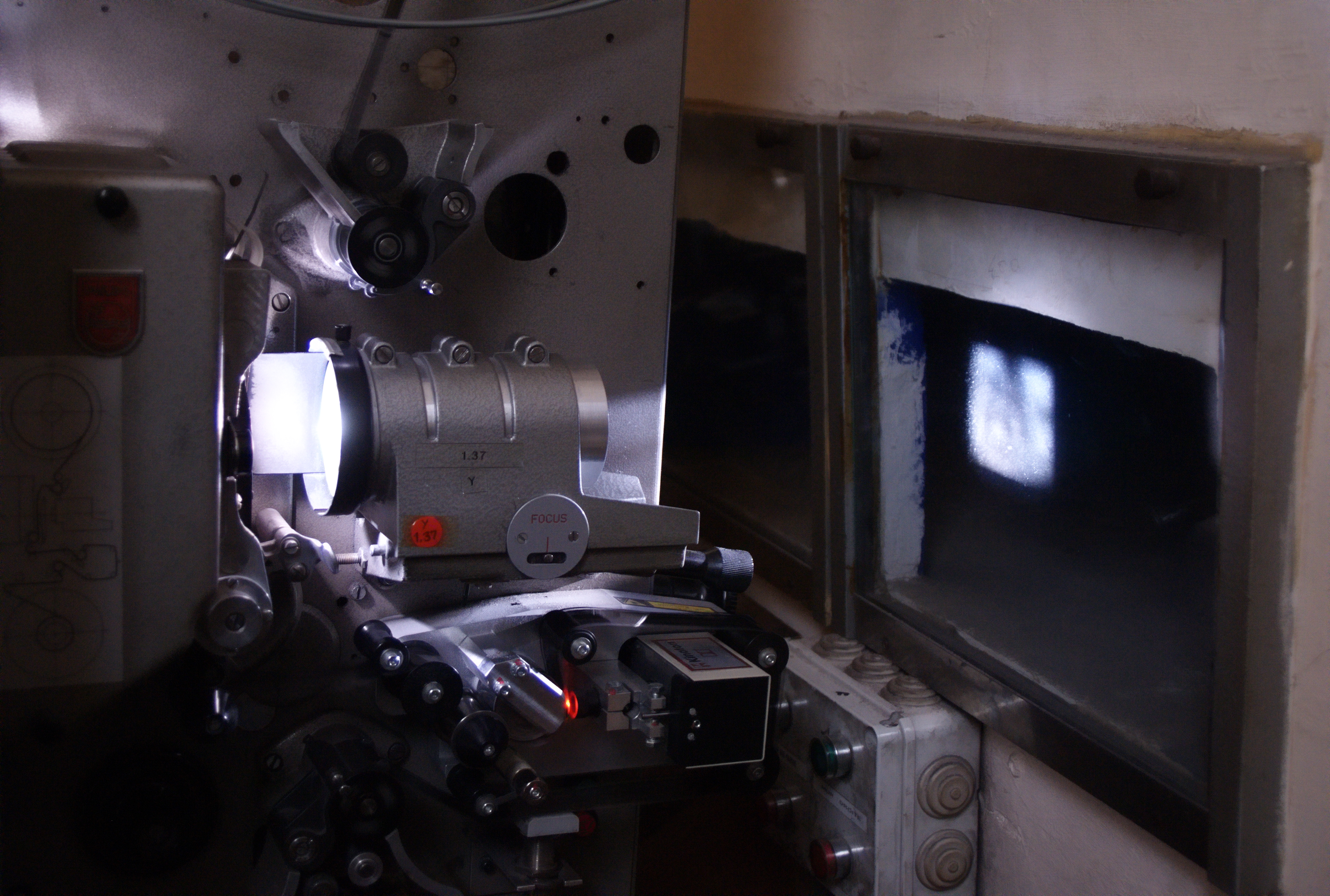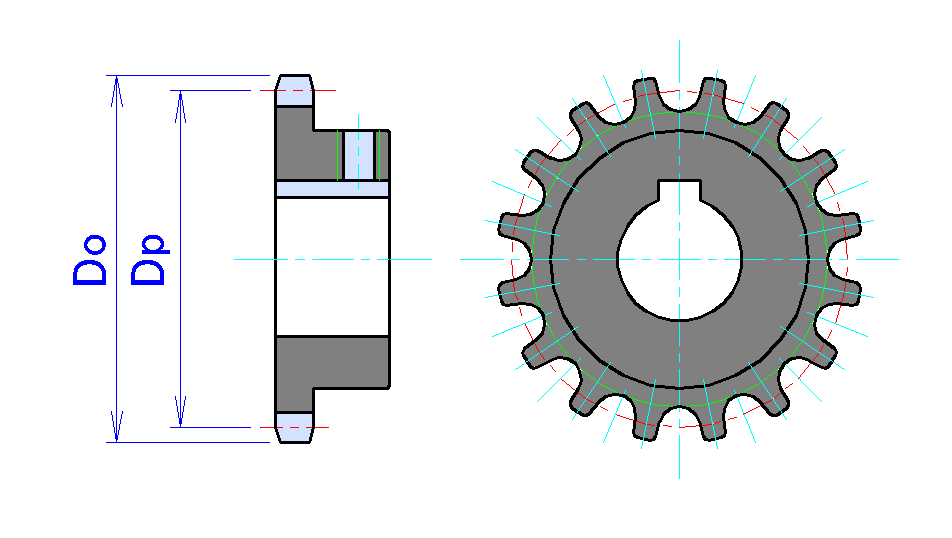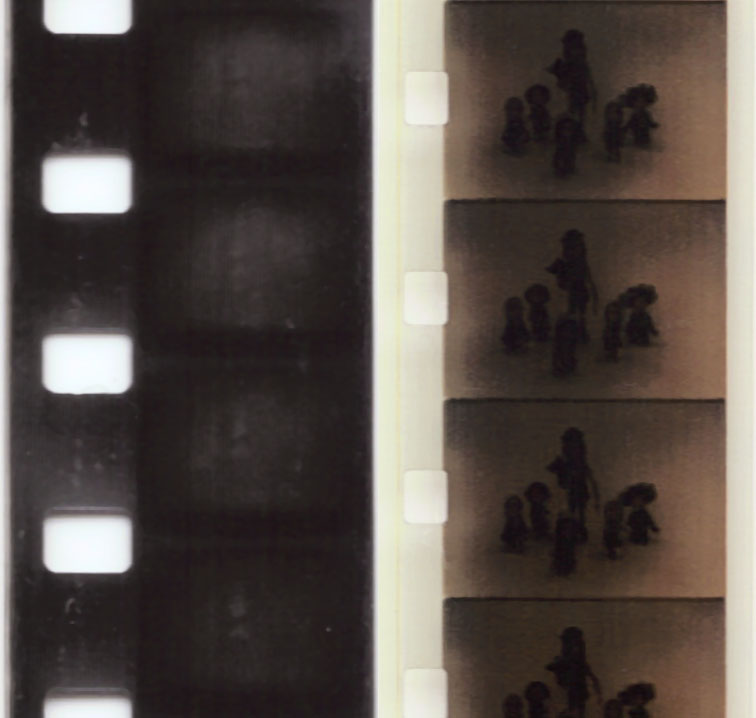|
Sepmag
A sound follower, also referred to as ''separate magnetic'', ''sepmag'', ''magnetic film recorder'', or ''mag dubber'', is a device for the recording and playback of film sound that is recorded on magnetic film. This device is locked or synchronized with the motion picture film containing the picture. It operates like an analog reel-to-reel audio tape recording, but using film, not magnetic tape. The unit can be switched from manual control to sync control, where it will follow the film with picture. Operation Many motion picture cameras do not record audio sound on the film, so in professional film production, there is a need to have the sound recorded and played back on a device that has a double-system recording to tapes, or by any means, for example DAT or Nagra, SD or other audio recording media and then transferred to 16mm or 35mm sprocketed magnetic film. The sound recording would then be synchronized with a movie projector or a telecine. Either 35mm film or 1 ... [...More Info...] [...Related Items...] OR: [Wikipedia] [Google] [Baidu] |
Recording Head
A recording head is the physical interface between a recording apparatus and a moving recording medium. Recording heads are generally classified according to the physical principle that allows them to impress their data upon their medium. A recording head is often mechanically paired with a playback head, which, though proximal to, is often discrete from the record head. Types The two most common forms of recording head are: * Magnetic - Magnetic recording heads use the principles of electromagnetism to coerce a paramagnetic recording medium, such as iron oxides, to orient in a readable manner such as magnetic tape. Record heads are constructed of laminated permalloy, ferrite, or sendust. As of 2006, this is the most dominant type of head in use. * Optical - Optical recording heads use the principles of optics and light to impart energy on a recording medium, which accepts the energy in a readable manner, e.g. by melting or photography. Note that Magneto-optical recording, though ... [...More Info...] [...Related Items...] OR: [Wikipedia] [Google] [Baidu] |
Movie Projector
A movie projector is an optics, opto-mechanics, mechanical device for displaying Film, motion picture film by projecting it onto a movie screen, screen. Most of the optical and mechanical elements, except for the illumination and sound devices, are present in movie cameras. Modern movie projectors are specially built video projectors. (see also digital cinema) Many projectors are specific to a particular film gauge and not all movie projectors are film projectors since the use of film is required. Predecessors The main precursor to the movie projector was the magic lantern. In its most common setup it had a concave mirror behind a light source to help direct as much light as possible through a painted glass picture slide and a lens, out of the lantern onto a screen. Simple mechanics to have the painted images moving were probably implemented since Christiaan Huygens introduced the apparatus around 1659. Initially candles and oil lamps were used, but other light sources, such ... [...More Info...] [...Related Items...] OR: [Wikipedia] [Google] [Baidu] |
History Of Sound Recording
The history of sound recording - which has progressed in waves, driven by the invention and commercial introduction of new technologies — can be roughly divided into four main periods: * The Acoustic era (1877–1925) * The Electrical era (1925–1945) * The Magnetic era (1945–1975) * The Digital era (1975–present) Experiments in capturing sound on a recording medium for preservation and reproduction began in earnest during the Industrial Revolution of the 1800s. Many pioneering attempts to record and reproduce sound were made during the latter half of the 19th century – notably Édouard-Léon Scott de Martinville's phonautograph of 1857 – and these efforts culminated in the invention of the phonograph by Thomas Edison in 1877. Digital recording emerged in the late 20th century and has since flourished with the popularity of digital music and online streaming services. Overview The Acoustic Era (1877–1925) The earliest practical recording technol ... [...More Info...] [...Related Items...] OR: [Wikipedia] [Google] [Baidu] |
Movie Theater
A movie theater (American English), cinema (British English), or cinema hall ( Indian English), also known as a movie house, picture house, the movies, the pictures, picture theater, the silver screen, the big screen, or simply theater is a building that contains auditoria for viewing films (also called movies) for entertainment. Most, but not all, movie theaters are commercial operations catering to the general public, who attend by purchasing a ticket. The film is projected with a movie projector onto a large projection screen at the front of the auditorium while the dialogue, sounds, and music are played through a number of wall-mounted speakers. Since the 1970s, subwoofers have been used for low-pitched sounds. Since the 2010s, the majority of movie theaters have been equipped for digital cinema projection, removing the need to create and transport a physical film print on a heavy reel. A great variety of films are shown at cinemas, ranging from animated films to bloc ... [...More Info...] [...Related Items...] OR: [Wikipedia] [Google] [Baidu] |
Post-production
Post-production is part of the process of filmmaking, video production, audio production, and photography. Post-production includes all stages of production occurring after principal photography or recording individual program segments. The first part of the post-production process is the traditional non-linear (analog) film editing at the outset of post-production has mostly been replaced by digital or video editing software that operates as a non-linear editing (NLE) system. The advantage of being able to have this non-linear capacity is in the flexibility for editing scenes out of order, making creative changes at will, carefully shaping the film in a thoughtful, meaningful way for emotional effect. Once the production team is satisfied with the picture editing, the picture editing is said to be "locked." At this point begins the turnover process, where the picture is prepared for lab and color finishing and the sound is "spotted" and turnover to the composer and sound de ... [...More Info...] [...Related Items...] OR: [Wikipedia] [Google] [Baidu] |
Hertz
The hertz (symbol: Hz) is the unit of frequency in the International System of Units (SI), equivalent to one event (or cycle) per second. The hertz is an SI derived unit whose expression in terms of SI base units is s−1, meaning that one hertz is the reciprocal of one second. It is named after Heinrich Rudolf Hertz (1857–1894), the first person to provide conclusive proof of the existence of electromagnetic waves. Hertz are commonly expressed in multiples: kilohertz (kHz), megahertz (MHz), gigahertz (GHz), terahertz (THz). Some of the unit's most common uses are in the description of periodic waveforms and musical tones, particularly those used in radio- and audio-related applications. It is also used to describe the clock speeds at which computers and other electronics are driven. The units are sometimes also used as a representation of the energy of a photon, via the Planck relation ''E'' = ''hν'', where ''E'' is the photon's energy, ''ν'' is its freq ... [...More Info...] [...Related Items...] OR: [Wikipedia] [Google] [Baidu] |
Clapperboard
A clapperboard (also known by various other names including dumb slate) is a device used in filmmaking and video production to assist in synchronizing of picture and sound, and to designate and mark the various scenes and takes as they are filmed and audio-recorded. It is operated by the clapper loader. When sound and picture are out of synchronization, there is a lip flap occurring. History In the silent era the principal requirement of film stock identification during a day's shoot was the slate. The clapper as two sticks hinged together was invented by F. W. Thring (father of actor Frank Thring), who later became head of Efftee Studios in Melbourne, Australia. The clapboard with both the sticks and slate together was a refinement of Leon M. Leon (1903–1998) a pioneer sound engineer. Description The clapperboard combines a chalkboard slate or acrylic board with a set of clapper sticks across the top. The slate displays the name of the production, the scene and "take" a ... [...More Info...] [...Related Items...] OR: [Wikipedia] [Google] [Baidu] |
Sprocket
A sprocket, sprocket-wheel or chainwheel is a profiled wheel with teeth that mesh with a chain, track or other perforated or indented material. The name 'sprocket' applies generally to any wheel upon which radial projections engage a chain passing over it. It is distinguished from a gear in that sprockets are never meshed together directly, and differs from a pulley in that sprockets have teeth and pulleys are smooth except for timing pulleys used with toothed belts. Sprockets are used in bicycles, motorcycles, tracked vehicles, and other machinery either to transmit rotary motion between two shafts where gears are unsuitable or to impart linear motion to a track, tape etc. Perhaps the most common form of sprocket may be found in the bicycle, in which the pedal shaft carries a large sprocket-wheel, which drives a chain, which, in turn, drives a small sprocket on the axle of the rear wheel. Early automobiles were also largely driven by sprocket and chain mechanism, a practice la ... [...More Info...] [...Related Items...] OR: [Wikipedia] [Google] [Baidu] |
Film Perforations
Film perforations, also known as perfs and sprocket holes, are the holes placed in the film stock during manufacturing and used for transporting (by sprockets and claws) and steadying (by pin registration) the film. Films may have different types of perforations depending on film gauge, film format, and intended usage. Perforations are also used as a standard measuring reference within certain camera systems to refer to the size of the frame. Some formats are referred to in terms of the ratio "perforations per frame/gauge size" to provide an easy way of denoting size. For instance, 35mm Academy is also known as 4 perf-35mm; VistaVision is 8 perf-35mm; the long-time standard Todd-AO 70 mm film is 5 perf-70mm; and IMAX is 15 perf-70mm. This description does not indicate whether the film transport is horizontal or vertical, but uncertainty is precluded because there are currently no horizontal systems using the same number of perforations on the same gauge as a vertical one. Pi ... [...More Info...] [...Related Items...] OR: [Wikipedia] [Google] [Baidu] |
Movie Projector
A movie projector is an optics, opto-mechanics, mechanical device for displaying Film, motion picture film by projecting it onto a movie screen, screen. Most of the optical and mechanical elements, except for the illumination and sound devices, are present in movie cameras. Modern movie projectors are specially built video projectors. (see also digital cinema) Many projectors are specific to a particular film gauge and not all movie projectors are film projectors since the use of film is required. Predecessors The main precursor to the movie projector was the magic lantern. In its most common setup it had a concave mirror behind a light source to help direct as much light as possible through a painted glass picture slide and a lens, out of the lantern onto a screen. Simple mechanics to have the painted images moving were probably implemented since Christiaan Huygens introduced the apparatus around 1659. Initially candles and oil lamps were used, but other light sources, such ... [...More Info...] [...Related Items...] OR: [Wikipedia] [Google] [Baidu] |
16mm Film
16 mm film is a historically popular and economical gauge of film. 16 mm refers to the width of the film (about inch); other common film gauges include 8 and 35 mm. It is generally used for non-theatrical (e.g., industrial, educational, televisual) film-making, or for low-budget motion pictures. It also existed as a popular amateur or home movie-making format for several decades, alongside 8 mm film and later Super 8 film. Eastman Kodak released the first 16 mm "outfit" in 1923, consisting of a camera, projector, tripod, screen and splicer, for US$335 (). RCA-Victor introduced a 16 mm sound movie projector in 1932, and developed an optical sound-on-film 16 mm camera, released in 1935. History Eastman Kodak introduced 16 mm film in 1923, as a less expensive alternative to 35 mm film for amateurs. The same year the Victor Animatograph Corporation started producing their own 16 mm cameras and projectors. During the 1920s, the fo ... [...More Info...] [...Related Items...] OR: [Wikipedia] [Google] [Baidu] |







